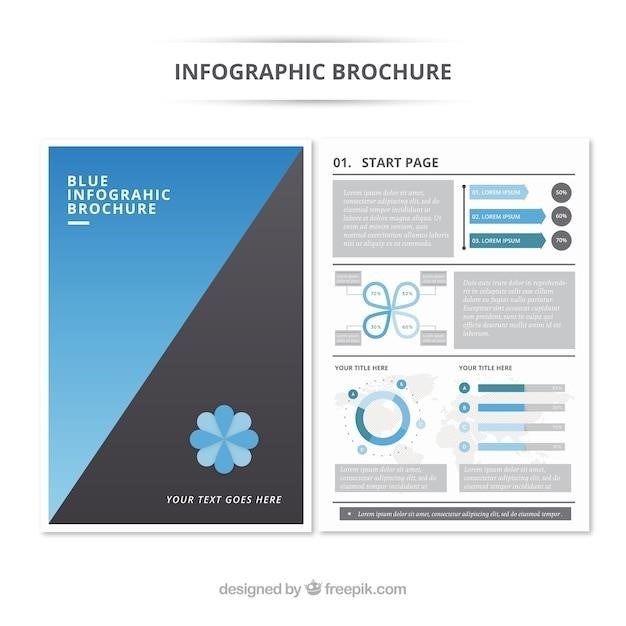ASTM E1527-21⁚ A Comprehensive Guide
ASTM E1527-21 is a widely recognized standard for conducting Phase I Environmental Site Assessments (ESAs). This standard, published in November 2021, provides a comprehensive guide for environmental professionals and stakeholders involved in real estate transactions. It outlines the process for identifying potential environmental liabilities associated with a property, ensuring due diligence and mitigating potential risks. The standard aims to clarify ambiguities that arose with the previous version, ASTM E1527-13, and incorporates emerging contaminants like PFAS.
What is ASTM E1527-21?
ASTM E1527-21, formally known as “Standard Practice for Environmental Site Assessments⁚ Phase I Environmental Site Assessment Process,” is a comprehensive standard developed by the American Society for Testing and Materials (ASTM) for conducting Phase I Environmental Site Assessments (ESAs). This standard establishes a standardized methodology for environmental due diligence, helping to identify potential environmental liabilities associated with a property.
A Phase I ESA is a non-intrusive assessment that involves reviewing historical records, conducting site reconnaissance, and interviewing knowledgeable individuals. It aims to identify recognized environmental conditions, such as past or present uses of the property that could have resulted in environmental contamination. The assessment typically involves a thorough review of historical records, including property deeds, zoning records, aerial photographs, and environmental databases.
The standard is intended for use by parties involved in real estate transactions, including buyers, sellers, lenders, and environmental consultants. It provides a framework for conducting a thorough and comprehensive assessment, ensuring that potential environmental liabilities are identified and addressed before a property is acquired or developed.
Key Changes in ASTM E1527-21
ASTM E1527-21 introduced several significant changes compared to its predecessor, ASTM E1527-13, aimed at improving clarity, consistency, and addressing emerging environmental concerns. One notable change is the inclusion of specific guidance on emerging contaminants, such as per- and polyfluoroalkyl substances (PFAS). The standard now requires environmental professionals to consider the potential presence of PFAS during their assessments, recognizing their widespread prevalence and potential for environmental and health impacts.
Another key change is the revised definition of “recognized environmental condition” (REC). The standard now emphasizes the need to consider both historical and present uses of a property, along with potential off-site sources of contamination, when evaluating RECs. This broadened scope aims to provide a more comprehensive assessment of potential environmental risks. The standard also introduces a new category of RECs known as “historical recognized environmental conditions” (HRECs) to address the potential for past environmental impacts that may no longer be active but still pose a risk.

The updated standard also clarifies the responsibilities of environmental professionals, emphasizing the need for clear and concise reporting. This includes specific requirements for identifying data gaps, disclosing any limitations of the assessment, and providing recommendations for further investigation if necessary.
Impact of ASTM E1527-21 on Commercial Real Estate
The implementation of ASTM E1527-21 has significant implications for the commercial real estate industry, affecting various stakeholders involved in transactions, including buyers, sellers, lenders, and developers. The updated standard provides a more comprehensive framework for conducting environmental due diligence, ensuring that potential environmental liabilities are identified and addressed early in the process. This enhanced due diligence can lead to more informed decision-making, reducing the risk of unexpected environmental costs and potential legal liabilities down the road.
For buyers, the new standard can provide greater assurance about the environmental condition of a property. The inclusion of emerging contaminants like PFAS in the assessment process can help identify potential risks that may not have been considered previously. This can be particularly important for properties with a history of industrial or manufacturing uses. For lenders, the updated standard can help mitigate their risk exposure by ensuring that borrowers are conducting thorough environmental assessments. This can lead to more secure lending decisions and reduce the potential for loan defaults due to unforeseen environmental liabilities.
Overall, the impact of ASTM E1527-21 is expected to lead to greater transparency and accountability in commercial real estate transactions. By providing a standardized approach to environmental due diligence, the standard aims to create a more level playing field for all stakeholders involved, fostering a more informed and sustainable real estate market.
Environmental Site Assessments⁚ Phase I
A Phase I Environmental Site Assessment (ESA) is the initial step in the environmental due diligence process for real estate. It is a non-invasive assessment that aims to identify potential environmental liabilities associated with a property. This assessment is crucial for informing decision-making during real estate transactions, as it helps buyers, sellers, and lenders understand the potential risks and costs associated with environmental contamination. The process typically involves reviewing historical records, conducting site reconnaissance, and interviewing local stakeholders.
The Phase I ESA is conducted according to specific standards, such as ASTM E1527-21. This standard outlines the requirements for conducting the assessment, including the types of information to be collected, the methods to be used, and the reporting requirements. The objective is to provide a comprehensive assessment of potential environmental risks, taking into account factors like the property’s history, location, and surrounding environment.
The results of a Phase I ESA are documented in a written report that details the findings of the assessment. The report includes information on potential environmental liabilities, as well as recommendations for further investigation or remediation if necessary. This report serves as a valuable tool for stakeholders involved in real estate transactions, enabling them to make informed decisions about the property and its potential environmental risks.
ASTM E1527-21 and the All Appropriate Inquiry (AAI) Rule
The All Appropriate Inquiry (AAI) rule, established by the U.S. Environmental Protection Agency (EPA) under 40 CFR Part 312, is a key legal requirement for real estate transactions. It aims to protect prospective buyers, lenders, and owners from liability related to environmental contamination by ensuring they conduct adequate due diligence. The AAI rule mandates that parties involved in real estate transactions must conduct an “all appropriate inquiry” to determine if the property is contaminated or has the potential for contamination.
ASTM E1527-21 plays a crucial role in satisfying the AAI rule. The standard provides a recognized and widely accepted framework for conducting Phase I ESAs, which are considered a key component of the AAI process. By adhering to the requirements outlined in ASTM E1527-21, parties can demonstrate that they have conducted an “all appropriate inquiry” and can potentially limit their liability for environmental contamination.
The EPA’s final rule adopting ASTM E1527-21 as a satisfactory method for meeting the AAI rule reinforces the standard’s significance in environmental due diligence. This adoption provides clarity and certainty for parties involved in real estate transactions, streamlining the process of conducting environmental assessments and ensuring compliance with regulatory requirements.
Obtaining a Free PDF of ASTM E1527-21
While the full text of ASTM E1527-21 is not typically available for free download, several resources provide access to excerpts, summaries, and related materials that can be helpful in understanding the standard. The American Society for Testing and Materials (ASTM) website offers a variety of resources, including information about the standard, its history, and its applications. They may also offer excerpts or summaries of the standard for free access.
Many consulting firms specializing in environmental site assessments also provide free downloadable resources related to ASTM E1527-21. These resources often include white papers, brochures, and articles that explain the key changes in the standard, its impact on commercial real estate transactions, and how to comply with its requirements. Additionally, numerous online platforms and websites dedicated to environmental law, regulations, and standards may offer free downloads of ASTM E1527-21 summaries, articles, or related documents.
While obtaining a complete, free PDF of ASTM E1527-21 may be challenging, accessing free resources that explain the standard’s key points and provide guidance on its implementation can be beneficial for anyone involved in real estate transactions or environmental due diligence.
The Future of ASTM E1527-21
ASTM E1527-21 is a dynamic standard that will likely continue to evolve in response to changing environmental regulations, emerging contaminants, and industry practices. The EPA’s adoption of the 2021 standard suggests a commitment to keeping pace with advancements in environmental due diligence and risk assessment. The increasing awareness of emerging contaminants like PFAS, which are not explicitly addressed in the current standard, will likely necessitate updates to incorporate best practices for their assessment and management.
The ongoing development of environmental technologies, such as remote sensing and advanced data analytics, may also influence future revisions of the standard. As these technologies become more widely adopted, they could potentially streamline and enhance the Phase I ESA process, leading to more efficient and comprehensive assessments. The future of ASTM E1527-21 will likely involve a balance of maintaining a robust framework for environmental due diligence while incorporating advancements in environmental science, technology, and regulatory requirements.
The standard’s continued relevance and impact on commercial real estate transactions will depend on its ability to adapt to these evolving factors and provide a reliable, comprehensive, and up-to-date guide for environmental professionals and stakeholders.
ASTM E1527-21 represents a significant advancement in the field of environmental due diligence for commercial real estate. This standard provides a clear framework for conducting Phase I ESAs, ensuring a comprehensive and rigorous assessment of potential environmental liabilities. The standard’s adoption by the EPA underscores its importance in protecting prospective buyers, lenders, and owners from environmental risks.
The availability of a free PDF copy of ASTM E1527-21 makes it easily accessible to environmental professionals, real estate stakeholders, and anyone interested in understanding the requirements for conducting a Phase I ESA. This accessibility fosters greater transparency and promotes informed decision-making in real estate transactions. The standard’s ongoing evolution will ensure its continued relevance and impact in safeguarding the environment while facilitating responsible real estate development.
By embracing the principles outlined in ASTM E1527-21, the real estate industry can contribute to a sustainable future by minimizing environmental risks and promoting responsible land use practices.



Leave a Reply
You must be logged in to post a comment.